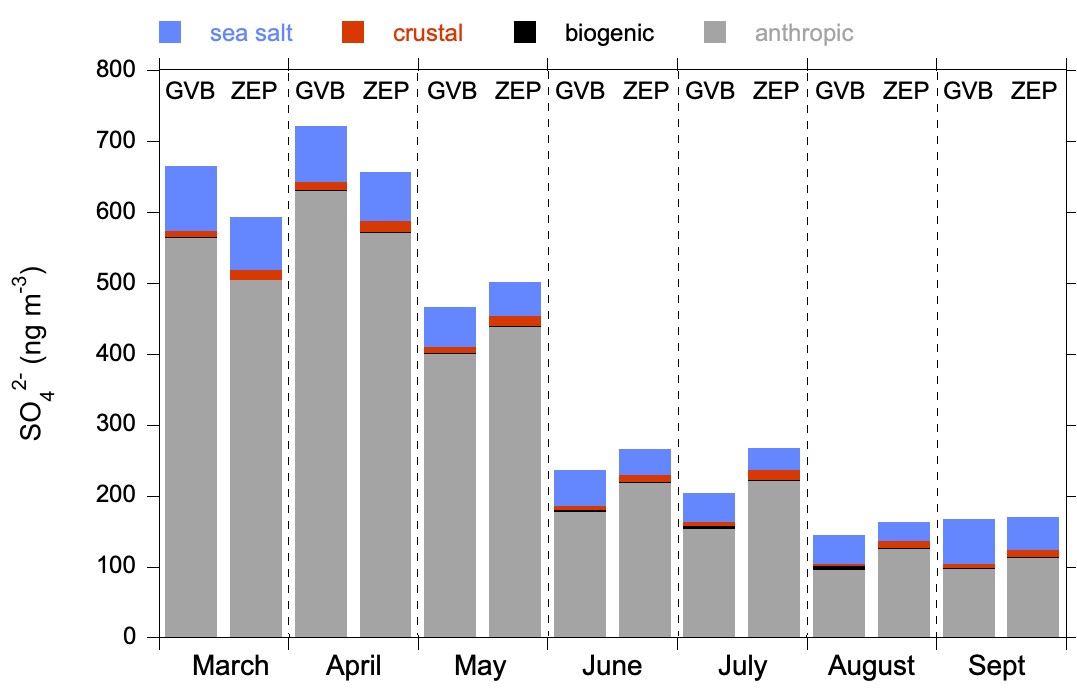AEROSOLS
Type of resources
Available actions
IADC Research Activities
Topics
Keywords
Contact for the resource
Provided by
Years
Formats
Representation types
Update frequencies
status
Scale
-
Sampling of PM10 aerosol using a cascade impactor to define the chemical composition in six different size stages. The quartz filters were extracted with ultrapure water and water soluble species were determined: major ions, MSA, carboxylic acids, amino acids, sugars, phenolic compounds, and other organic water-soluble emergening pollutants.
-

Ice Nuclei Particle Concentration (INPAIR) INPAIR Svalbard' Chemistry and Physics of the Atmosphere: Ice nucleating particle (INPs) concentration obtained in spring and summer campaigns in the Arctic Region. Measurements of INPs concentrations and activation fraction of aerosol in Arctic (e.g. Gruvebadet observatory in Ny-Ãlesund). b) Correlating INPs concentration with meteorological parameters and physicochemical characterisations. Instrument: PM1 and PM10 sampling lines. DFPC chamber
-

Sulphate contributions to PM10 aerosol sampled at Gruvebadet Observatory (Ny-Ålesund)
-
Aerosol size distribution (>500 nm) measured by a SMPS 3321 (TSI).
-
Mixing state and organic volume fractions of sub micron aerosol particles collected at the Zeppelin observatory
-

Monitoring of Aerosol: Short and Long range source areas related to Climate Change (MAShLoCC) During the Arctic campaign 2010, an atmospheric aerosol sampling at the Gruvebadet observatory has been carried out in order to obtain information about the formation and composition of atmospheric aerosol, transport processes toward the Arctic zone as well as local and remote source areas. Instrument : ICP-SFMS, IRMS, Orbitrap
-
Aerosol size distribution (10-500 nm) measured by a APS 3321
-
Aerosol absorption coefficient at 3 wavelengths (470, 530, 670 nm) measured using a Particle Soot Absorption Photometer (PSAP), manufactured by Radiance Research.
-

Aerosol Flux in Arctic (ALFA) Evaluate aerosol dry deposition/emission in the Arctic on icy/snowy surface and its dependence on particle size and micrometeorological parameters. The measures of the particles exchange rate will be carried out with the technique of eddy-correlation at Ny Alesund in size-segregated mode (2-3000 nm) coupling a sonic anemometer, a CPC and an optical particle counter (OPC) that are able to detect fluctuations of the particles concentration at high frequency (1Hz).
-

Main a trace chemical markers annually and seasonally averaged concentrations in the aerosol (bulk and PM10) sampled in 10 sites in the Arctic and Panarctic regions